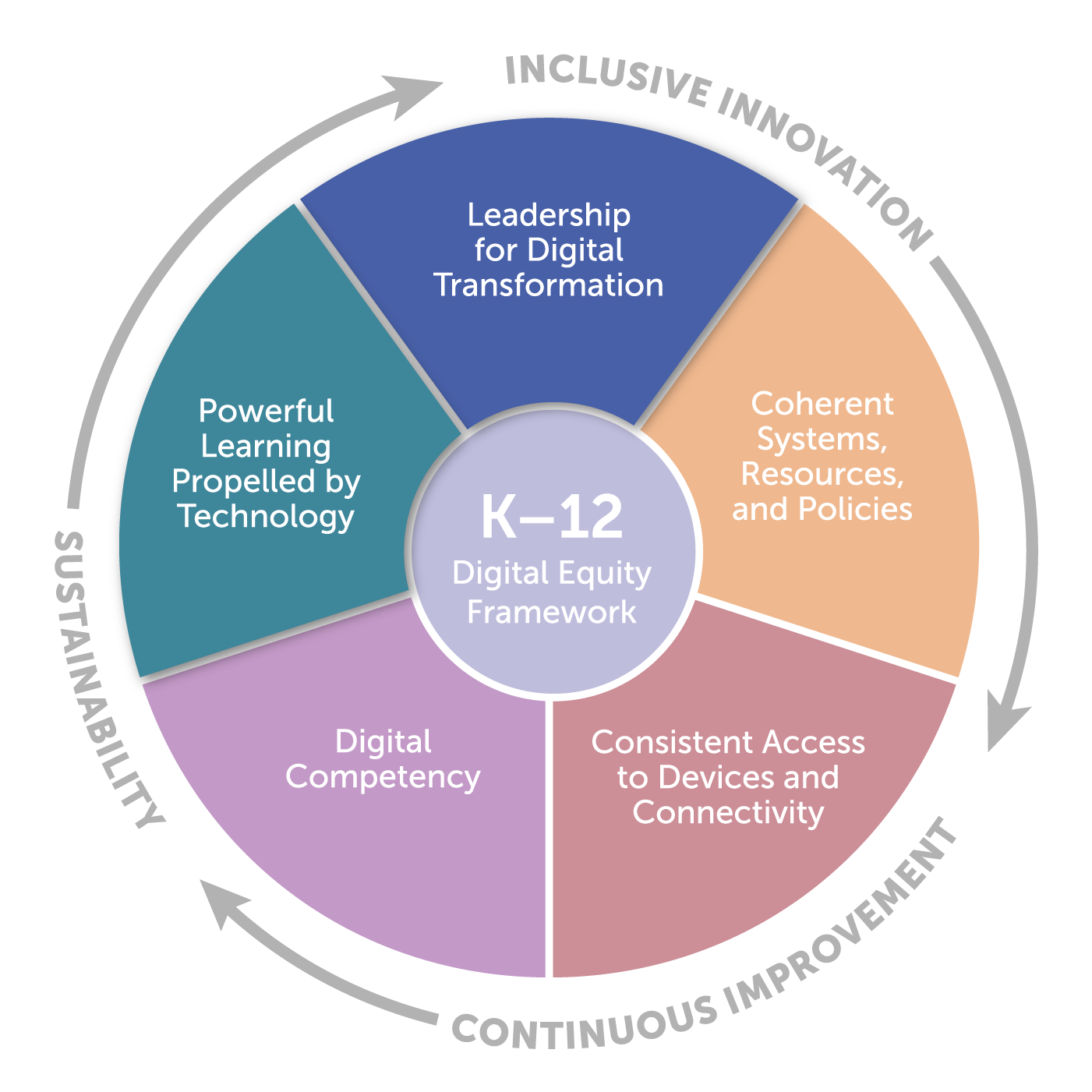Powerful Learning Propelled by Technology refers to learner-centered instructional models that seamlessly integrate emerging technologies, digital resources, and tools into evidence-based teaching and learning practices that result in high engagement and deep understanding. This domain marries the key tenets of Powerful Learning with the innovative potential of emerging technologies, digital resources, and tools. The goal is for learners to develop the vital competencies needed to earn credentials and achieve greater well-being, agency, and economic security.

The domain indicators provide guidance on what school and district stakeholders need to accomplish to activate the domains. Hitting these “markers” signal that schools and districts are making progress toward triggering each domain in full.
Essential Question: Are learning experiences characterized as learner-centered? Do they demonstrate meaningful technology integration?
Learners and teachers consistently engage in authentic, challenging, and technology-rich learning experiences that reflect the principles of Powerful Learning, 21st-century skills development, and preparation for full participation in a digitally driven society, as evidenced by:
Learning experiences meaningfully integrate technology to support learner variability, collaboration, and real-world relevance, aligning with powerful learning principles and research-based teaching and learning pedagogy. As a result, learners experience powerful, learner-centered technology integration, as demonstrated by:
Educators demonstrate proficiency in leveraging technology and applying Universal Design for Learning (UDL) principles to create equitable, inclusive, and learner-centered environments that foster student agency; empower all learners; and ensure equitable academic, social, and economic outcomes, as shown by:
The Digital Equity Competencies for K-12 School Systems define what teachers, instructional technology coaches, and administrators (inclusive of district, school, and IT leaders) need to know and be able to do—and the mindsets they need to have—to activate each of the five domains collectively.
Lamar Middle School student Samya’s powerful learning experiences relate to her personal interests, challenge her in exciting ways, foster meaningful collaboration with her peers, and inspire deep inquiry and reflection. Through all steps of the experience, the digital learning tools she uses enhance her ability to reach her learning goals by streamlining communication and opening up creative ways to solve problems encountered in the project.
The Digital Equity Framework offers a holistic approach to bridging the digital teaching and learning divides. The framework’s emphasis on interdependence across domains ensures that all aspects of digital equity are addressed. Below are examples that highlight some of the interdependencies across multiple domains:
 Powerful Learning Propelled by Technology and…
Powerful Learning Propelled by Technology and…Digital competencies enable learners and educators to effectively utilize emerging technologies, digital resources, and tools to create engaging and relevant learning experiences.
Powerful learning experiences propelled by technology, in turn, help develop and reinforce digital competencies, preparing individuals for success in a digitally driven society.

Leadership plays a crucial role in setting the vision and creating the conditions for powerful, technology-enhanced learning experiences.
The successful implementation of powerful learning propelled by technology can demonstrate the effectiveness of leadership’s vision and strategies, building support for further digital transformation efforts.